What a day the beginning of Indian summer. Indian summer - what is it and when does it come? What is the natural essence of this period?
"Indian Summer" - today and in the old days:
‘When does Indian Summer start?’
"Indian Summer", a long period of warm and dry weather at the end of September or in the 1st half of October in Europe and North. America Associated with a steady anticyclone over a given territory. All in. America this period is called "Indian summer." Long (2-3 weeks) "B. l.", Occurring after a significant cooling, may be accompanied by the secondary flowering of some plants, usually flowering only once a year.
In the autumn, it seems that most people call almost any warm day. ”And although their mistake is, of course, not in the world of the rocking variety, they, for the most part, are mistaken. Here are the criteria for an Indian summer. In addition to heat, the atmosphere during the Indian summer is foggy or smoky, there is no wind, the barometer is high, and the nights are clear and cold. A moving, cold, shallow polar air mass turns into a deep, warm, stagnant anticyclone system, which causes turbidity and a large temperature fluctuation between day and night. The timing is important: warm days should follow the period of cold weather or good hard frost. The conditions described above must occur between the saints.
Great Soviet Encyclopedia.
... on Semen-day again, sevalka from the shoulders, is Indian summer, before the fall or Aspos day (Small Prechistaya, September 8), or before Exaltation ...
V. Dahl. Big Explanatory Dictionary. - SUMMER
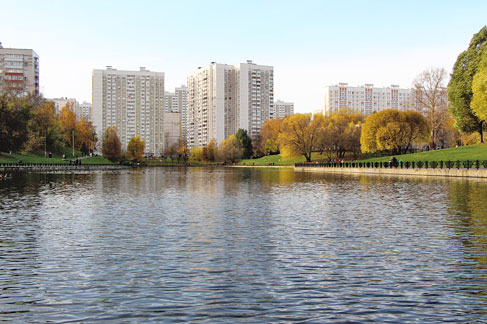
What does the phrase "Indian Summer".
In our time, the summer weather is called the Indian summer, when the fall is summer-like warm weather.
The original meaning of the phrase is not related to the weather. In the old days of Babi, the period was called when the women of the peasant community completed their part of the summer field work.
Why is it called Indian summer?
For more than 200 years, the Almanac of the old farmer adhered to the statement “If all the saints bring winter, St. Martin brings out the Indian summer.” Why is Indian summer called Indian summer? The most likely origin of this term, in our opinion, goes back to the earliest settlers in New England. But then the time came when he would be warm again, and the Native Americans would decide that there was another way out for the settlers. "Indian summer", it was called the settlers.
Do you experience Indian summer conditions in your area? Also try our delicious next Indian summer day. Autumn heat waves are often called “Indian summers,” but what does this term mean? Meteorologist Philip Eden explains. Something strange is happening with how we perceive our climate in recent years.
When does Indian Summer start?
But here, at first glance, a strange story: in Russia there were two "Indian Summer": young and mature (old). Moreover, both Indian summer have a hard calendar binding: the young Indian summer began on The Assumption August 28 (August 15, old style) and ended at John the Baptist September 11 (August 28, Art. Art.) *, And the mature one began on Flying Seeds September 14 (September 1, Art. Art.) And ended on Nativity of the Virgin September 21 (September 8, Art. Art.).
Why two Indian summers? The reason is that in Russia there were two rural structures — the northern and the southern. In the south, cereals ripen earlier and the harvest time to finish before Dormitory and after the harvest the women had a break before harvesting the root crops, in the North the harvest could have lasted longer and there was another massively grown crop - flax, besides, the whole crop needed to be harvested before the first frost, therefore, the “Northerners” came later.
Vladimir Ivanovich Dahl in his Explanatory Dictionary writes: "For each locality (latitude), its summer ..." and calls only one Indian summer, which begins on Flying Seeds, while indicating that in one place it ends on Nativity of God, in others last up to Elevations (27 (14th Art. Art.) September).
Regardless of the locality, Indian Summer was rigidly tied to the feasts of the Orthodox calendar. In the years of the young Soviet government, this calendar was banned. Then they tried to emasculate all popular customs, replacing them with new, revolutionary ones. The phrase “Indian Summer” would have “sunk into oblivion” if not for writers and poets, though they filled it with a new meaning:
Currently, when we get a bout of unusual weather, we ask what went wrong. The gap seems to be growing between the British and their own climate. But most unusual weather spells are just unusual. They happened before, and they will repeat again.
During this spell, one or two date records can be broken, but date records are relatively easy to break. During the last week of the month, mercury heaved several times to 30 ° C or slightly higher. Autumn heat waves like this are often called "Indian summers." For some reason, the “summer of the Indians” does not have the same ring, does it?
There is a time of nature of a particular light
dim sun, the most tender heat.
It is called Indian summer
and in the charms of arguing with the very spring.
Olga Bergholz. Poems. "Indian summer".
With such a meaning, "Indian Summer" was allowed ... Well, and then it went, the brisk popular idiom caught journalistic fraternity, and as a result, "Indian Summer" became almost the official meteorological term, analogue of the North American Indian Summer. Only the American “Indian summer” happens every year, and our “Central Russian Autumn” can do without it. So we have a more relevant question: "Will there be a Indian summer?"
The late 19th century lexicographer Boston named Albert Matthews made an exhaustive search for early American literature in an attempt to find out who came up with the expression. The North American Indians — the Native Americans who lived on the east coast — were depending on long periods of beautiful, calm, sunny weather at this time of year, in order to complete their harvest and gather food supplies to see them through the long, cold winter.
Other Indian Summer Names
Early settlers quickly recognized the contrast between the exhausting heat of high summer and the more comfortable conditions that prevailed during the fall. During this time, long periods of hard work could be solved without the risk of heat stroke. They also noted that almost every fall produced at least one such spell - many had two or three.
Such a transformation of the meaning of the phrase “Indian Summer” has occurred in the last 90 years ...
And the answer to the main question - “When will the Indian summer begin?”: Weather “Indian summer” in Central Russia can happen both in September and in October and be quite short - last year in Moscow there were as many as two Indian summers - " young and mature. In this, 2015, year according to national signs, it turns out that the Indian summer in Moscow will begin at the very beginning of October, or, most likely, it will not be at all (the weather will not reach the air temperature).
Famous climatologists of the 20th century, such as Ernest Bilham, Gordon Manley and Hubert Lamb, did not use it in their extensive work, except when it comes to the American phenomenon. After he was installed, he quickly became associated with those spells of unprecedented warm weather that occur from time to time in the fall.
Until the middle of the last century, such a beautiful weather spell was associated with ancient weather phenomena and the church calendar. All these expressions can still be heard in different parts of Britain, but mainly in remote rural areas. Although they, of course, are much less common than 60 or 70 years ago.
Indian summer is short ...
Both the old and the new meaning of the “Indian summer” have some common signs, both in the modern calendar in the fall, and both are short in time, today, and you can say “Indian summer is short”:
"Indian Summer" is short, like the Indian age,
But, for many, the thread of salvation ...
It can be seen as a man
After all, women have a short bloom ...
The idea that these warm spells are especially highlighted in the UK in the fall is whimsical. Detailed statistical analysis does not suggest that any week is more preferable than any other, and in a few years autumn brings relentlessly disturbed weather with a gradual decrease in temperature, and there is nothing remote in the Indian summer, like anything at all.
The origin of all these sayings is perhaps more related to maintaining the spirit of the people during the rush to the winter. The leaves have changed, often past their peak color, when warm, hazy southern air covers the region, sometimes lasting a whole week. But what is Indian summer and where did this name come from? The daily winter, usually found in mid-spring, and the Indian summer, usually in the middle of autumn, are weather phenomena that are common enough to get a nickname.
Tatyana Tanko. Poems.
Meteostatistics, Moscow.
Let us now turn to the figures: we will refer to the weather of the Indian summer days, when in the autumn after the bad weather came clear or variable cloudy weather with little rainfall (< 1-2 мм) со среднесуточной температурой около 15 ° C and above or with its maximum near 20 ° C and above:
The term “Indian summer” is usually associated with a period of significantly higher temperatures, accompanied by dry and foggy conditions opening in the south or southwest wind. In several historical references, the fact is noted that a true Indian summer cannot occur until the deadly frost or freeze occurs.
The use of the term Indian dates dates back to American history. According to a study by Detroit, Michigan, employee of the National Meteorological Service, Bill Didler, who describes himself as a “weather historian”, the term “Indian summer” refers to the 18th century in the United States. But an earlier use of this term was found in a letter written by a Frenchman named Saint John de Crevecker, dated by German apartments on January 17th.
Indian Summer 2017, Moscow:
Two Indian summers are expected: the "young Indian summer" - in early September, the "mature Indian summer" - in the twenties of September and the first days of October.
2016 year - Indian summer did not take place .
25.09.2016
- Indian summer is not, and, alas, it seems that it will not ...
2015 - Indian summer, and the "mature", come 16 of Septemberis over September 28...
Below is the translation of the letter. Sometimes the rain is followed by an interval of calm and warmth, which is called the Indian summer, its characteristics are a calm atmosphere and a general smoke. As Monsieur Kreveveker says: This is called the "Indian Summer", obviously, it can be argued that this term should have been used before it and became popular, but by whom? We are talking about weather conditions lost in history.
There is a debate about the origin of the term, the Indian summer. One explanation for the term “summer of summer” may be that the early Native Indians chose this time of year as their hunting season. This seems reasonable if the autumn months are still considered the main hunting season for several animals. In addition, the mild and foggy weather encourages animals, and the air nebula gives the hunter an advantage to sneak up on his prey without being detected. Taking this idea one step further, the Indians at that time, as you know, set fires on prairie grass, undergrowth and forest to emphasize foggy, smoky conditions.
year 2014 - The “young” Indian summer in Moscow began on September 5 and ended on September 13, the “mature” Indian summer began on September 19 and ended on September 23.
year 2013 - Indian summer in Moscow in 2013 was not.
2012 - from September 12 to 15 and from September 19 to 22;
2011 - September 14 and 15, October 6 and 7 - we can say that there was no Indian summer;
Today, these theories are discounted by linguists who track the history of the origin of words. Ware, who noted that ships that were crossing the Indian Ocean at that time loaded their cargo most during the summer or fair weather season. On some ships, in fact, he was I.S., on their hull at a load level that is considered safe during the Indian summer.
In any case, there are several theories or possibilities for explaining and the origin of the term "Indian summer", but no theory has actually been proven. A typical weather map reflecting summer weather in India is associated with a large area high pressure along or on the east coast. From time to time it will be the same high pressure that created frost or frost only a few nights before, as it exited Canada through the plains, the Midwest and the Great Lakes, and then finally to the East Coast.
2010 - september 14 to 17;
2009 - in early September, the warm weather continued as it was settled back in August, and after a bit of bad weather came the days of the Indian summer: september 13-17 and September 21, 22;
2008 - from September 3 to 8 and from 3 to 6 October;
2007 - from September 3 to 7, September 19, and from September 28 to October 3;
What does the phrase "Indian Summer"
Much warmer temperatures, starting from the deep south and southwest, then stretch northward in the southern breeze, resulting from the wind turning clockwise around high pressure. It is characteristic that these conditions persist for at least several days longer than a week, and there may be several cases before the onset of winter.
Such a soft spell usually breaks when a strong system low pressure and watching the cold front pushing across the area. This dramatic change is due to a sharp shift in the upper winds or jet stream from the south or southwest to the northwest or north. Of course, there may be some changes in the above weather map scenario, but for simplicity and sharing this will be a general weather map.
2006 - September 8, 9, from September 12 to 14 and from September 19 to 25;
2005
- from September 7 to 10, September 12, 13 and September 29 to October 4;
Curious fact: There is another meaning of the phrase printed as “Indian Summer”, but after the utterly pronounced “Indian Summer”, which arose because of the modern rules for using the letter “ё”, it is “cobweb flying in the fall through the fields and forests; (V. Dal) - its other name is “Babiy Lot”.
In the autumn season there may be several cases of Indian summer or not at all. Enjoy the Indian summer, while it is around, because one thing is certain, it never lasts! There is no suggestion that this can be considered offensive.
There is also a suggestion about a possible etymology, that it has something to do with the traditions of hunting for Native Americans, but she does not insist on this very much or does not give any source of a claim. Several other possible conclusions are proposed.
Other features include; the Indians used dry, foggy weather to attack whites before the onset of a harsh winter; that it was the harvest season of India; Or, that the prevailing south-westerly winds that accompanied the Indian summer periodwere considered Indians as a favor or “blessing” from a “god” in the southwest of the desert. Another idea of a more biased origin was that perhaps the earliest English immigrants equated Native American Summer to Leto's “fools”, given the reliability of the resulting weather.
Sergey Ov (Seosnews9)
Hello, my dear friends and just readers!
Indian summer has arrived in the central region of the European territory of Russia! There are no people who would not like this warm and dry pore. When the entire crop has been harvested in the fields and garden beds, there are no particularly important matters, it is time for relative rest. But even those who do not have everything removed in their summer cottages and gardens, try to use these fine days to dig up the beds, plant bulbous flowers, strawberries, bushes and fruit trees. But you never know how to do business on your private plots!
Ware, who noted that ships crossing the Indian Ocean at that time loaded their cargo most of all during the Indian Summer, or the weather season. S., On their hull at the level of load, which is considered safe during the Indian summer. However, when conditions become more summer again this week, many are wondering if this is India’s summer in the making.
Traditionally, Indian summer is a spell above average temperatures, accompanying dry and sunny weather after the end of summer. This term has been used in much of Western Europe. Although the exact interpretation of this term is vague, it is believed that it was based on warm and foggy conditions in the fall, when Native American Indians preferred to hunt. The prediction of whether the true Indian summer will occur during the fall is not so straightforward, and there is no statistical evidence that such a warm spell tends to repeat every year.
Indian summer, also called Marfino summer, is a period of warm and dry weather on the eve of autumn. It usually comes after cold and rainy days, when weather is replaced by a steady anticyclone. The air temperature rises to + 20 ° С, or even higher. In different regions of Russia, Indian summer comes in different ways, but more often it happens in September - early October. The duration of Indian summer can be different, from 3 days to 7-10 days.
And do they all know: where did the name of this season of the year “Indian Summer” come from and what does it mean?
Indian summer. The history of the name of the Indian summer
According to the Brockhaus and Efron dictionary, “Indian Summer” is a dry, clear weather in late August and early September, when the web of a spider-bokhod flies in the air. According to V. Dahl's dictionary, the beginning of Indian summer was associated with the national holidays and began on the day of Simeon, the pilgrim, on September 1 (14), and ends on the Autumn 9 (September 21); or on the day of the Exaltation of September 14 (27).
The expression “Indian summer” according to the Great Soviet Encyclopedia is the time when old women can bask in the autumn sun. And at this time, the field work of the peasants ends, and women could do household chores and preparations for the winter. At this time, pickles began to pickle. And in the evenings they arranged gatherings, in which the women enjoyed themselves in their own way: they spun yarn, knitted, embroidered and sang songs.
In Russia, during the Indian summer, rural holidays were held. During the Indian summer was such a custom: put up and settle all conflicts.
People say that the time of "Indian summer" had a certain meaning. There was a superstition that women have terrible power and they can bring back the seasons and in general can affect the weather.
Indian summer. The beauty of Indian summer
Many try to go to nature free of work and enjoy the colors of the passing summer and the coming autumn. Well, I could not resist, also went for a walk. We have very beautiful places in the north. And in the colors of autumn nature becomes even more beautiful. Of course, I could not resist and again photographed. It seems to me that even considering these photos, the mood improves. And no matter where and who lives. Although nature is different everywhere, but with its beauty it always pleases everyone.
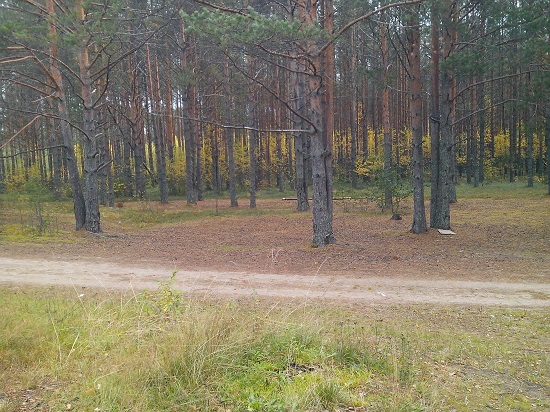
The road to the river passes through a pine forest.
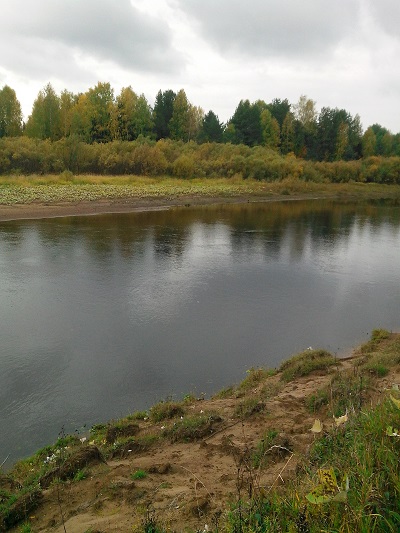
This is the upper river. Vyatki.
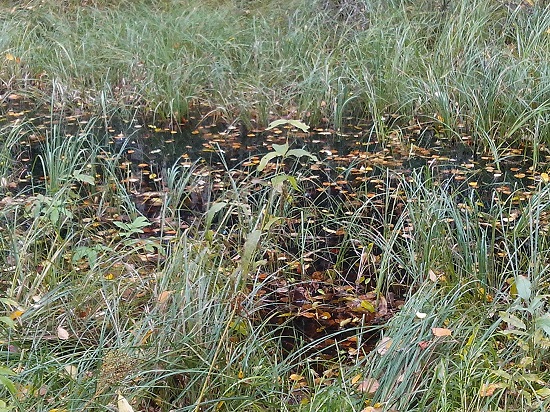
It is a grassy little lake.
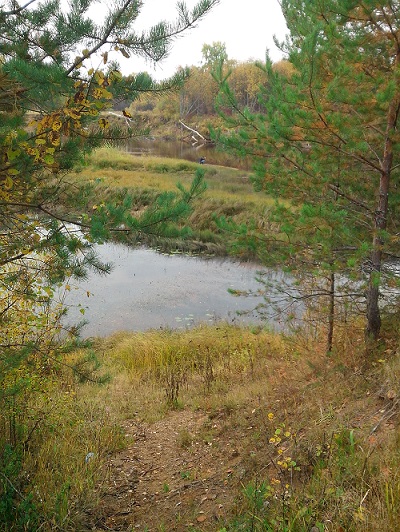

already ripe. It's time to collect it.
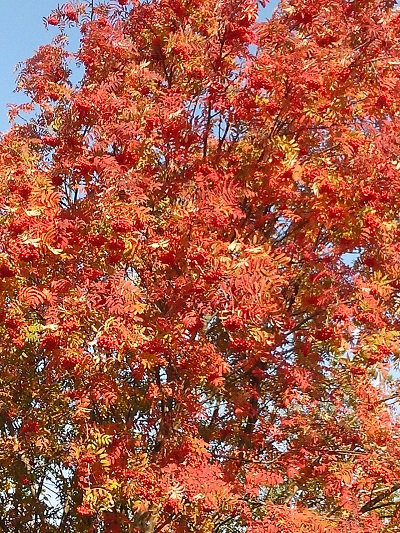
Autumn colors. Red rowan.
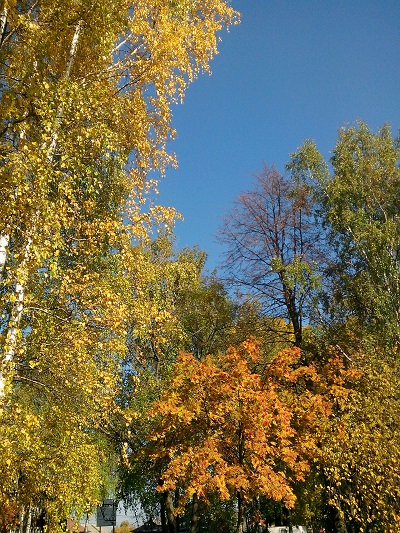
Autumn colors. How beautiful golden leaves look against a blue sky.

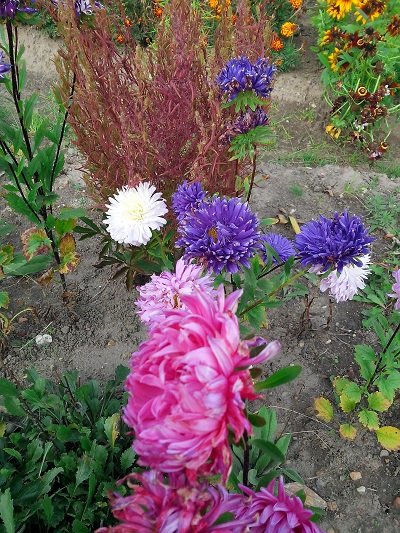
And this is the last flowers in the garden, slightly stuck with frost. We already had frosts. But with the onset of golden autumn, they still delight us with its beauty.
Dear friends! Continuing the mood of Indian summer, I propose to see a good love movie.
My dear readers! If this article was helpful to you, then share it with your friends by clicking on the social buttons. networks. It is also important for me to know your opinion about the read, write about it in the comments. I will be very grateful to you.
With wishes of good health Taisiya Filippova


